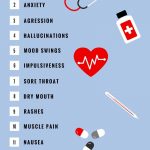Contents
- 1 Can You Get Pregnant Without Ovulating?
- 1.0.1 What Causes Anovulatory Cycles?
- 1.0.2 How Is Anovulation Treated?
- 1.0.3 Risks of Fertility Medicines
- 1.0.4 How Long Does Ovulation Last Each Month?
- 1.0.5 How Long Does Ovulation Last Each Month?
- 1.0.6 What Are the Natural Signs and Symptoms of Ovulation?
- 1.0.7 How Can You Track Your Ovulation?
- 1.0.8 Subscribe to MedicineNet’s Pregnancy & Newborns Newsletter
Can You Get Pregnant Without Ovulating?
If you’re not ovulating, you can’t get pregnant because there is no egg for the sperm to fertilize. However, if you have unprotected sex from 5 days before ovulation until 1 day after ovulation, pregnancy is possible.
Understanding your menstrual cycle and its relationship to fertility is crucial whether you’re trying to conceive or avoid pregnancy. There are numerous misconceptions and myths about fertility, but learning about the specific circumstances under which conception can occur will provide clarity on when pregnancy is likely or unlikely.
Ovulation is the release of an egg from the ovary, which typically happens 10 to 16 days prior to the onset of a menstrual period. Predicting ovulation precisely can be challenging since cycle lengths can vary. Even with consistent cycle lengths, ovulation doesn’t always occur on the same day.
An additional indicator of ovulation is changes in cervical mucus, which becomes wetter, clearer, and more slippery during this time. Additionally, there may be a slight rise in body temperature after ovulation. Ovulation predictor kits are also available to detect hormonal changes in urine that indicate ovulation.
What Causes Anovulatory Cycles?
Anovulation, or the absence of ovulation, often results from hormonal imbalances that disrupt the process. It begins with elevated levels of luteinizing hormone (LH) and follicle-stimulating hormone (FSH). Various underlying conditions can interfere with these hormones, including:
Obesity: Excess weight can cause higher levels of testosterone and other male hormones, which disrupt ovulation-regulating hormones.
Low body weight or excessive exercise: Both low body weight and intense exercise can disrupt the release of hormones that control ovulation.
Stress: Stress can also affect ovulation-regulating hormones. High levels of a stress-related enzyme in saliva have been linked to prolonged conception times.
Polycystic Ovarian Syndrome (PCOS): PCOS is a common hormonal imbalance that affects about 1 in 10 women of childbearing age. Excess androgens associated with PCOS prevent the release of mature eggs from the ovaries.
Abnormalities in TSH or Prolactin: Thyroid-stimulating hormone (TSH) and Prolactin, hormones produced by the pituitary gland, can disrupt ovulation when their levels are abnormal.
QUESTION
How Is Anovulation Treated?
Fertility drugs are commonly used to treat anovulation. Examples include:
Clomiphene citrate (CC): CC stimulates the hormones that induce egg release, resulting in ovulation for around 80% of women and a 40% pregnancy rate.
Human chorionic gonadotropin (hCG): This hormone triggers the release of an egg from the ovary within 36 to 72 hours of administration. It is also the hormone detected in pregnancy tests, leading to false-positive results after hCG treatment.
Follicle stimulating hormone (FSH): Lab-created FSH assists in the maturation of eggs in the ovaries. It may be used for women who don’t ovulate with CC or cannot produce their own FSH. FSH treatment carries the risk of a 20% to 30% chance of multiple pregnancies and requires close monitoring by a doctor.
GnRH agonists and antagonists: These synthetic hormones regulate the release of LH, which triggers ovulation.
Risks of Fertility Medicines
Fertility medications carry certain risks. Close monitoring is vital to minimize side effects, including:
- Ovarian hyperstimulation, which can cause serious complications such as blood clots, kidney damage, ovarian torsion, and fluid accumulation in the abdomen or chest.
- Pregnancy with multiple babies occurs in approximately 20% of pregnancies resulting from fertility drugs.
- Ectopic pregnancy, where a fertilized egg implants outside the uterus.
- Ovarian torsion, a condition characterized by twisted ovaries.
- Possibly increased risk of ovarian cancer, although ongoing research is being conducted regarding this association.
How Long Does Ovulation Last Each Month?
A typical menstrual cycle lasts between 24 and 37 days, though it may vary slightly in individual women.
Ovulation represents the fertile period of each month when an ovary releases an egg. The chances of conceiving are highest during this time. Usually, an ovary releases only one egg during each menstrual cycle. Therefore, tracking your menstrual period and identifying when your ovaries release eggs is crucial for conception or contraception purposes.
How Long Does Ovulation Last Each Month?
Ovulation occurs once a month, and the egg remains viable for 12 to 24 hours.
On any day between day 7 and 21 of your cycle, depending on its length, your ovaries release one mature egg. This phase is known as ovulation. The released egg is captured by the fallopian tube. If you have intercourse during this period, the egg has a higher chance of being fertilized by sperm, potentially resulting in pregnancy. This represents your optimal time for conception.
Occasionally, a second egg may be released within 24 hours of the initial egg release.
For some women, identifying the exact timing of egg release (ovulation) can be challenging due to irregular periods or other factors. Hormonal issues can contribute to difficulty in egg release. During breastfeeding, the chances of pregnancy are minimal.
What Are the Natural Signs and Symptoms of Ovulation?
During your ovulation or fertile period, you may notice three main signs:
- Cervical mucus: A woman may experience wetness during this phase. The cervix releases a fluid with varying consistency, becoming slippery, stretchy, and similar to raw egg whites. These changes in cervical mucus occur at the beginning and end of your fertile period, aiding sperm in movement and survival for up to five days.
- Basal body temperature: A slight increase in body temperature during ovulation days is common. Tracking your temperature can help determine the timing of egg release and your fertile time frame.
- Mittelschmerz: Some women may experience cramps or spotting on the side where the egg is released.
Observing, recording, and interpreting these three signs can help identify the early non-fertile, fertile, and late fertile phases of your menstrual cycle. However, these signs should not be used to pinpoint the exact day of egg release.
Unless a woman is menstruating or experiencing regular menses after delivery (usually around six months), ovulation and pregnancy are unlikely during the breastfeeding period.
How Can You Track Your Ovulation?
Tracking ovulation, namely identifying the fertile window, can assist in determining the best days to engage in sexual intercourse for conception. Methods include:
Ovulation calendar: Tracking the start and duration of your period each month can help establish your fertile days.
Ovulation predictor kits: Home-based ovulation predictor kits recommended by the World Health Organization measure luteinizing hormone (LH) levels in urine, increasing the chances of pregnancy.
Devices and apps: Numerous devices and apps are available to monitor menstrual cycles, predict egg release, time intercourse, and anticipate the next period. However, accuracy may vary due to individual variations in natural fertility signs.
Subscribe to MedicineNet’s Pregnancy & Newborns Newsletter
By clicking “Submit,” I agree to the MedicineNet Terms and Conditions and Privacy Policy. I also agree to receive emails from MedicineNet and I understand that I may opt out of MedicineNet subscriptions at any time.
Sources:
American College of Obstetricians and Gynecologists: “Fertility Awareness-Based Methods of Family Planning.”
Emory Healthcare: “Ovulation Induction.”
Human Reproduction: “Preconception stress increases the risk of infertility: results from a couple-based prospective cohort study—the LIFE study.”
NHS: “How can I tell when I’m ovulating?”
JBRA Assisted Reproduction: “Obesity and anovulatory infertility: A review.”
Merck Manual: “Menstrual Cycle.”
Women and Infants: “Anovulation.”
Women and Infants: “Anovulation.”


